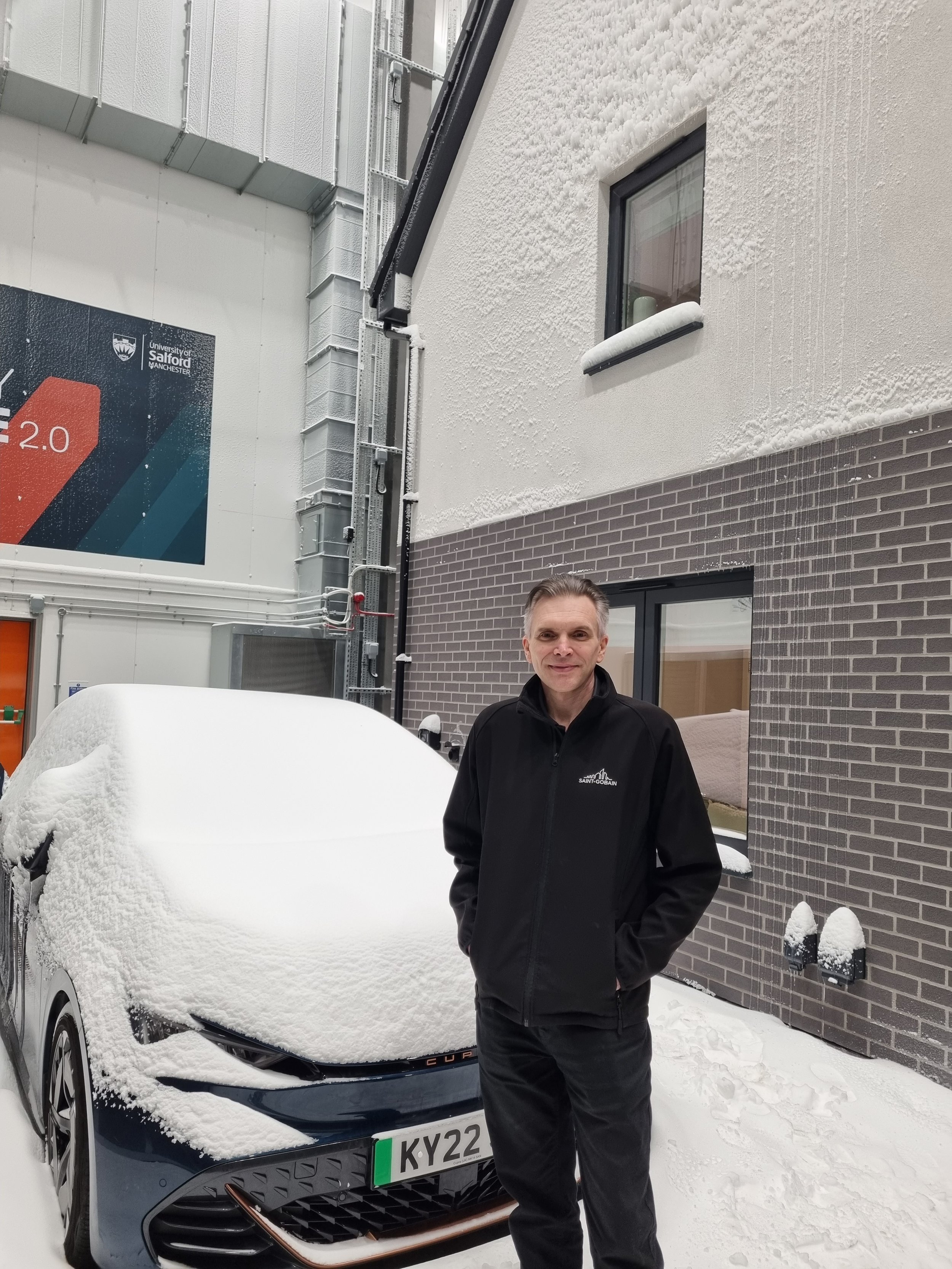Saint-Gobain:The performance of glass to be put to the test in net zero energy house 2.0
Double and triple glazed windows featuring high-performance glass from Saint-Gobain Glass will be put to the test in a unique £16m research facility designed to help create the energy efficient homes of the future.
Two full-size three-bedroom detached houses have been built inside the climate-controlled chamber of Energy House 2.0 at the University of Salford, using the latest sustainable building materials and technologies. Over a period of nine months, the houses built by Saint-Gobain, Barratt Developments and Bellway Homes will undergo rigorous whole-building testing including thermal performance, energy efficiency, running costs and comfort, as well as their ability to cope with extreme climates, such as wind, rain and snow, and temperatures ranging from -20 to +40 degrees Celsius.
Usually, it would take months or years to collect the data needed to evaluate the performance of a new design or technology, but because researchers can precisely control the environment to within half a degree, they can gather that data in a few weeks. That means that accurate results can be achieved quickly and accelerates the innovation process. In addition, the research will understand the impact of multiple technologies in the homes giving a better understanding of how the homes will perform in the real world.
Initially 1.2 Uw double-glazed, casement windows have been fitted into ehome2 by Barratt Homes. These will then be converted to 0.8 Uw triple-glazed casement windows by replacing the insulated glass units.
The double and triple glazed windows feature Planitherm One T low-e coated glass from Saint-Gobain Glass and have been manufactured by Regency Glass, using the Eurocell Modus Window System fabricated by Nova Group and installed by New View.
Mike Butterick, Marketing Director at Saint-Gobain Glass said: “This is a collaborative project involving the entire supply chain and demonstrates that the existing UK window industry is ready and able to deliver the high-performance casement windows demanded by the Future Homes Standard 2025.
“Saint-Gobain Glass is at the forefront of innovation in the UK glass and window industry. High-performance glass has a critical role to play in delivering the fabric-first solutions that other technologies rely on for the creation of low-carbon, energy efficient homes.
“This ground-breaking laboratory will play a key role in accelerating progress towards large volume, low carbon and net zero houses that are sustainable, comfortable and will cost homeowners far less to heat and run at a time when we’re in the midst of an energy crisis.
“Saint-Gobain is leading the way by making a significant investment in this partnership with Barratt Homes to deliver this project, which also includes products from other Saint-Gobain group companies. This cutting-edge research will make a real difference to people’s lives and will result in a step-change in the way homes are built and used in the future.”
Oliver Novakovic, Technical & Innovation Director at Barratt Developments, said: “With the energy efficiency of the external façades becoming ever more important, as we move to the 2025 Future Homes Standard, windows will play a critical role in meeting the regulations and delivering comfortable environments for our customers. EHome2 allows us to really understand the relationship between the façade, windows and heating solutions, which has not been considered to this level before.”
The built environment accounts for around 40% of the UK’s carbon footprint. The Future Homes Standard will require CO2 emissions produced by new homes to be 75-80% lower than those built to current standards. Homes will also need to be ‘zero carbon ready’, with no retrofit work required to benefit from the decarbonisation of the electricity grid and the electrification of heating. Energy House 2.0 is a £16 million project part-funded by the European Regional Development Fund.




